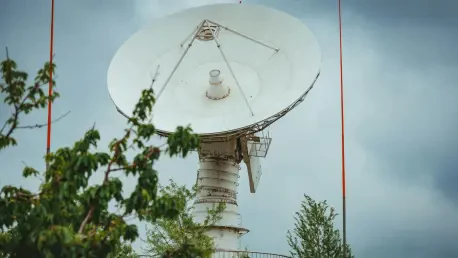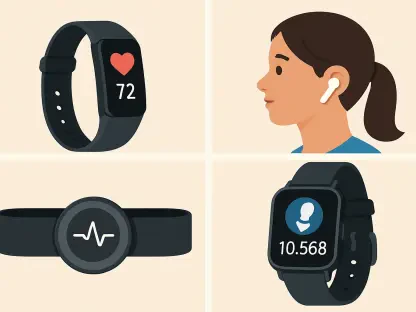In an era where staying connected is paramount, millions of people still find themselves cut off from communication in remote or rural areas due to the absence of cellular coverage, and imagine being stranded in a wilderness area with no signal, unable to share a critical image or location update with emergency contacts. This persistent challenge of cellular dead zones has spurred innovative solutions, one of which involves leveraging satellite technology to enable communication where traditional towers fail. A notable advancement in this space comes from T-Mobile’s partnership with SpaceX, introducing Multimedia Messaging Service (MMS) through the T-Satellite service. This development promises to transform how individuals communicate in isolated regions by allowing the transmission of images, audio, and short videos via a constellation of Starlink satellites. This article explores the functionality, user experience, and future potential of this groundbreaking service, shedding light on its role in closing connectivity gaps.
Performance and Functionality Insights
Real-World MMS Transmission Challenges
Testing the MMS capabilities of T-Mobile’s T-Satellite service in areas devoid of cellular coverage reveals both its potential and its limitations. The service, designed to work seamlessly on supported Android devices like certain Samsung and Motorola models, enables users to send multimedia content such as photos and short video clips through satellite connectivity. However, transmission times can be a significant hurdle. For instance, sending a single image might take up to two minutes, while a brief video could require 10 to 20 minutes to transmit. This delay, while not ideal for urgent communication, still marks a substantial step forward in delivering content from remote locations. The reliability of successful delivery stands out as a key strength, ensuring that messages eventually reach their intended recipients despite the lag. This aspect underscores the service’s value in non-time-sensitive scenarios, such as sharing updates with family or documenting surroundings in areas with no other means of communication.
Device Compatibility and Operational Limits
Beyond transmission delays, compatibility and operational constraints play a critical role in shaping the effectiveness of T-Mobile’s satellite MMS. Currently, the service is limited to specific Android devices, excluding popular models like iPhones from the 13 to 16 series, though plans are in place to expand support to Apple devices in the coming months. Another concern arises from the impact on device performance, particularly battery life. Prolonged use of satellite connectivity for sending multimedia content can drain power quickly, posing challenges for users who rely on their phones in extended off-grid situations. This limitation suggests that while the technology is a game-changer for occasional use, it may not yet be practical for frequent or heavy multimedia sharing. Addressing these operational hurdles will be essential for broader adoption, especially as the service aims to cater to diverse user needs in cellular dead zones where alternative communication options are nonexistent.
User Experience and Future Prospects
Seamless Connectivity in Remote Areas
One of the standout features of T-Mobile’s T-Satellite MMS service is its user-friendly design, which ensures automatic connectivity in cellular dead zones without requiring manual intervention. When a device enters an area with no traditional signal, it seamlessly switches to satellite mode, a transition confirmed by a notification from T-Mobile. This eliminates the need for users to adjust settings or maintain a clear line of sight to the sky, even when inside a vehicle. The ability to send GIFs, images of landscapes, or brief audio messages adds a layer of richness to communication that goes beyond basic text, enhancing both practicality and personal expression. This ease of use sets the service apart from other satellite messaging systems that often impose stricter operational requirements, making it a promising tool for individuals in rural or wilderness settings where staying connected can be a matter of safety or convenience.
Expanding Horizons and Industry Trends
Looking ahead, the trajectory of satellite-to-phone technology, as exemplified by T-Mobile’s collaboration with SpaceX, points to a future of even greater connectivity. Plans are underway to integrate data transmission with select third-party apps like weather services and messaging platforms by late this year, with aspirations to support voice and video calls pending regulatory approvals for additional spectrum. Meanwhile, the competitive landscape is heating up, as other major carriers like AT&T and Verizon prepare to launch their own satellite services through partnerships with AST SpaceMobile early next year. This industry-wide push toward satellite integration reflects a shared recognition of the need to eliminate connectivity barriers in underserved regions. While current pricing for T-Satellite access stands at an additional $10 per month for most T-Mobile customers, broader accessibility and potential cost adjustments could further democratize this technology, paving the way for universal communication coverage.
Closing the Connectivity Divide
Reflecting on the strides made with T-Mobile’s T-Satellite MMS service, it becomes evident that this technology has already begun to redefine communication in cellular dead zones. The ability to transmit multimedia content, despite noticeable delays, proved to be a reliable lifeline in remote areas during testing phases. As the industry witnesses growing competition and innovation, the groundwork laid by such services hints at a transformative shift in how connectivity challenges are addressed. Moving forward, stakeholders should prioritize enhancing transmission speeds and expanding device compatibility to ensure inclusivity. Additionally, exploring sustainable power solutions for prolonged satellite use could mitigate current operational drawbacks. As plans to integrate more advanced features like voice and video unfold, the focus remains on creating a seamless, accessible network that can serve all users, regardless of location, ultimately turning the vision of universal connectivity into a tangible reality.









